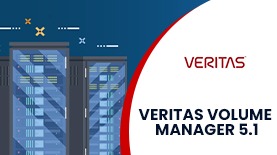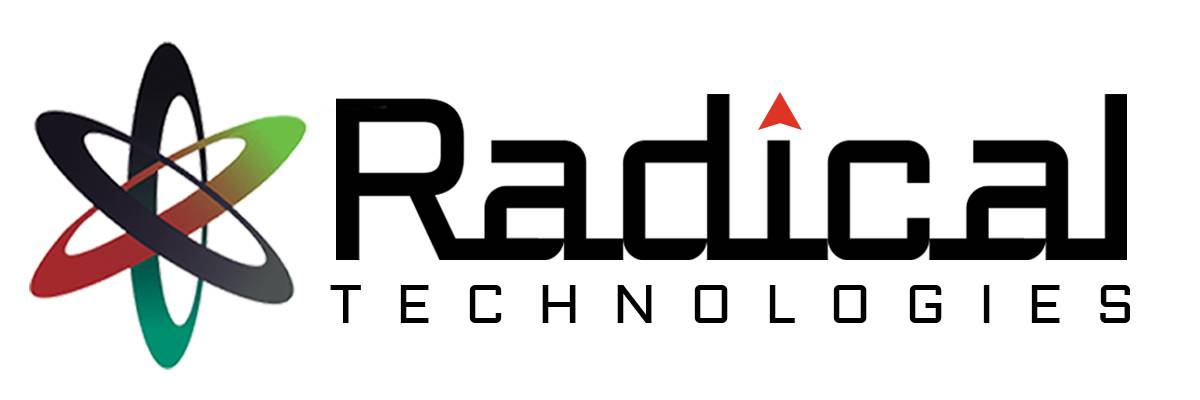- Home
- About Us
- Courses
- Combo Courses
- Programming Combo Courses
- Non Programming Combo Courses
- Linux & Cloud Combo
- Linux & DBA Combo
- AWS & Devops Combo
- Salesforce Combo
- Azure Admin Combo
- Azure Cloud & Azure Devops Combo
- Tableau Informatica Combo
- Power BI Informatica Combo
- Power BI & MSBI Combo
- Salesforce Manual Testing Combo
- Salesforce Tableau Combo
- Data Analytics Combo
- MCSA Azure Combo
- Powerplatform Combo
- ADF & Power BI Combo
- BA & Tableau Combo
- PG Diploma
- Online Schedule
- Offline schedule
- Job Openings
- Certifications
- Contact Us
VERITAS VOLUME MANAGER 5.1

Veritas Volume Manager 5.1, often referred to as VxVM, is a software-based volume manager and storage management solution developed by Veritas Technologies (formerly part of Symantec and now part of the broader Broadcom Inc.). It is primarily used in Unix, Linux, and Windows environments to manage storage devices, create logical volumes, and enhance data availability and performance.
4536 Satisfied Learners
VERITAS VOLUME MANAGER 5.1 TRAINING IN PUNE | ONLINE
Duration of Training : 40 hrs
Batch type : Weekdays/Weekends
Mode of Training : Classroom/Online/Corporate Training
Veritas Volume Manager 5.1 Training & Certification in Pune
Highly Experienced Certified Trainer with 10+ yrs Exp. in Industry
Realtime Projects, Scenarios & Assignments
Why Radical Technologies
Veritas Storage Foundation 5.1 for Solaris :
In this course, you will learn to integrate, operate, and make the most of VERITAS Storage Foundation, including VERITAS Volume Manager (VxVM) and VERITAS File System (VxFS), in a UNIX environment. You will learn to install and configure VERITAS Volume Manager and how to manage disks, disk groups, and volumes by using the graphical user interface and from the command line. You will also learn system troubleshooting and recovery, online file system administration, cross-platform data sharing, and offline and off-host processing using volume snapshots and storage checkpoints.
Skills Gained :
By the end of this course, you should be able to :
• Install and configure VxVM and VxFS
• Configure and manage disks, disk groups, and volumes
• Administer file systems.• Perform cross-platform data sharing
• Perform basic VxVM recovery operations
• Manage the dynamic multipathing feature
• Identify types of disk failure and resolve disk failures
• Interpret plex, volume, and kernel states, and fix plex and volume failures
• Place the root disk under VxVM control
• Monitor VxVM
• Create and manage point-in-time copies using VERITAS FlashSnap
Who Can Benefit :
This course is for UNIX system or network administrators, system engineers, technical support personnel, and system integration/development staff who will be installing, operating, or integrating VERITAS Storage Foundation.
Pre-requisites :
Knowledge of UNIX System Administration.
COURSE CONTENT :
1. Volume Manager
1.1. What is volume management?
1.2. Why vxvm and vxfs?
1.3. Feautures of vxvm and vxfs
1.4. Pre-requisites
2. VxVM Administration
2.1 VxVM Objects
2.1.1 Physical Objects
2.1.2 Virtual Objects
2.1.2.1. Volumes
2.1.2.2. Plexes
2.1.2.3. Subdisks
2.1.2.4. VM Disks
2.1.2.5. Diskgroups
2.2. Administering Volumes
2.2.1. Displaying volume information
2.2.2. Creating Volumes
2.2.3. Deleting Volumes
2.2.4. Mirroring Volumes
2.2.5. Moving Volumes from a VM Disk
2.2.6. Stopping and Starting a volume
2.2.7. Adding and Removing DRL Logging to volumes
2.2.8. Volume States
2.2.9. Volume Sets
2.3. Administering Plexes
2.3.1. Displaying Plex Information
2.3.2. Creating Plexes
2.3.3. Deleting and Disassociating Plexes
2.3.4. Moving Plexes
2.3.5. Detaching Plexes
2.3.6. Copying Plexes
2.3.7. Offlining Plexes
2.4. Administering Subdisks
2.4.1. Displaying subdisk information
2.4.2. Creating Subdisks
2.4.3. Deleting Subdisks
2.4.4. Moving Subdisks
2.4.5. Splitting Subdisks
2.4.6. Joining Subdisks
2.4.7. Associating Subdisks with Plexes
2.4.8. Associating Log subdisks
2.4.9. Dissociating Subdisks from Plexes
2.5. Administering VMDisks
2.5.1. Displaying disk information
2.5.2. Adding disk to VxVM
2.5.3. Adding disk to diskgroup
2.5.4. Removing disk from VxVM Control
2.5.5. Removing a disk from diskgroup
2.5.6. Encapsulating a Disk for Use in VxVM
2.5.7. Un-encapsulating the Root Disk
2.5.8. Taking a disk offline
2.5.9. Taking a disk online
2.5.10. Renaming a disk
2.5.11. Reserving a Disk
2.5.12. Setting and Unsetting Spare disk
2.5.13. Mirroring a disk
2.5.14. Using vxdiskadm
2.6. Administering Disk Groups
2.6.1. Displaying disk group information
2.6.2. Creating a disk group
2.6.3. Extending a disk group
2.6.4. Reducing a disk group
2.6.5. Destroying a disk group
2.6.6. Deporting a disk group
2.6.7. Importing a disk group
2.6.8. Renaming a disk group
2.7. Online Adminstration
2.7.1. Online Resizing
2.7.2. Administering Volume Snapshots.
2.7.3. Administering Hot-Relocation
2.7.4. Online Relayout
2.8. Administering VxVM with VEA
2.8.1. Introducing to VEA
2.8.2. Setting up your system
2.8.3. Starting and Stopping VEA
2.9. Veritas Storage Expert
2.9.1. How Storage Expert Works
2.9.2. Identifying Configuration Problems Using Storage Expert
3. VxFS Administration
3.1. VxFS Features
3.1.1. Extent Based Allocation
3.1.2. Fast File System Recovery
3.1.3. Online System Administration
3.1.4. Extended mount options
3.1.5. Quotas
3.1.6. Storage Checkpoints
3.1.7. Cross Platform Data Sharing
3.1.8. Multi Volume Support
3.2. Managing Veritas File System
3.2.1. Creating a File System
3.2.2. Mounting a File System
3.2.3. Unmounting a File System
3.2.4. Displaying information on Mounted File System
3.2.5. How to extend the FS using fsadm command.
3.2.6. How to shrink a FS
3.2.7. How to Reorganize a FS
3.2.8. How to create and Mount a Snapshot File System
3.2.9. How to Backup a File System
3.2.10. How to Restore a file system
3.2.11. Using Quotas
3.2.12. How to View Quotas
3.2.13. How to setup user quotas
3.2.14. How to turn off quotas
4. Installations
4.1. Package Description
4.2. Installing vxvm and vxfs
4.3. Checking Installations
4.4. Post Installation Tasks
4.5. Controlling Daemons
Learn Veritas Volume Manager 5.1 – Course in Pune with Training, Certification & Guaranteed Job Placement Assistance!
Online Batches Available for the Areas
Ambegaon Budruk | Aundh | Baner | Bavdhan Khurd | Bavdhan Budruk | Balewadi | Shivajinagar | Bibvewadi | Bhugaon | Bhukum | Dhankawadi | Dhanori | Dhayari | Erandwane | Fursungi | Ghorpadi | Hadapsar | Hingne Khurd | Karve Nagar | Kalas | Katraj | Khadki | Kharadi | Kondhwa | Koregaon Park | Kothrud | Lohagaon | Manjri | Markal | Mohammed Wadi | Mundhwa | Nanded | Parvati (Parvati Hill) | Panmala | Pashan | Pirangut | Shivane | Sus | Undri | Vishrantwadi | Vitthalwadi | Vadgaon Khurd | Vadgaon Budruk | Vadgaon Sheri | Wagholi | Wanwadi | Warje | Yerwada | Akurdi | Bhosari | Chakan | Charholi Budruk | Chikhli | Chimbali | Chinchwad | Dapodi | Dehu Road | Dighi | Dudulgaon | Hinjawadi | Kalewadi | Kasarwadi | Maan | Moshi | Phugewadi | Pimple Gurav | Pimple Nilakh | Pimple Saudagar | Pimpri | Ravet | Rahatani | Sangvi | Talawade | Tathawade | Thergaon | Wakad


